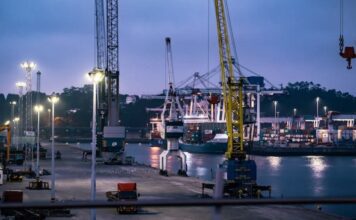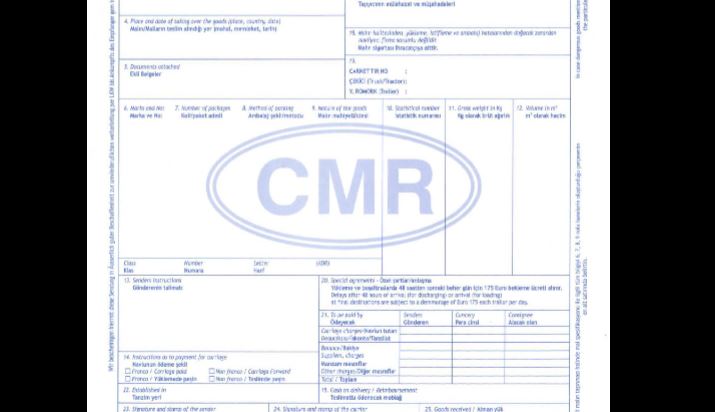Container Rates Continue to Set New Highs in 2021
Between 2016 and 2020, container rates while fluctuating never exceed $3,000 according to Drewry Shipping Consultant’s data. Rates, however, have been on a steady increase since last summer and the beginning of the recovery from the lows of the pandemic. Drewry’s composite exceeded $5,000 for the first time in 2021 and on one of the hardest high routes, China to Rotterdam, the rate has just exceeded $10,000 for the first time.
Average Cost from London October 2021
| Destination Port | 20ft Container Cost | 40ft Container Cost |
|---|---|---|
| New York, USA | £2,445 (GBP) | £4,389 (GBP) |
| Los Angeles, USA | £3,227 (GBP) | £3,938 (GBP) |
| Sydney, AUS | £2,108 (GBP) | £3,160 (GBP) |
| Melbourne, AUS | £2,108 (GBP) | £3,160 (GBP) |
| Auckland, NZ | £2,108 (GBP) | £3,160 (GBP) |
| Montreal, CAN | £3,442 (GBP) | £4,563 (GBP) |
| Vancouver, CAN | £3,136 (GBP) | £3,925 (GBP) |
| Le Havre, FRA | £1,304 (GBP) | £2,150 (GBP) |
| Barcelona, ESP | £2,009 (GBP) | £2,620 (GBP) |
| Amsterdam, NLD | £1,304 (GBP) | £2,150 (GBP) |
| Hamburg, GER | £1,302 (GBP) | £1,561 (GBP) |
| Dublin, IRE | £1,424 (GBP) | £1,890 (GBP) |
| Jebel Ali, UAE | £2,394 (GBP) | £3,177 (GBP) |
| Genoa, ITA | £1,909 (GBP) | £2,514 (GBP) |
| Lisbon, POR | £2,009 (GBP) | £2,621 (GBP) |
| Stockholm, SWE | £1,016 (GBP) | £1,350 (GBP) |
| Mumbai, IND | £3,064 (GBP) | £4,064 (GBP) |
| Singapore, SIN | £3,526 (GBP) | £4,679 (GBP) |
| Limassol, CYP | £2,009 (GBP) | £2,621 (GBP) |
| Copenhagen, DEN | £1,348 (GBP) | £1,787 (GBP) |
| Thessaloniki, GRE | £2,009 (GBP) | £2,621 (GBP) |
| Manila, PHL | £3,526 (GBP) | £4,679 (GBP) |
| Hong Kong, HKG | £3,234 (GBP) | £4,290 (GBP) |
| Cape Town, SAF | £2,246 (GBP) | £3,456 (GBP) |
| Shanghai, CHI | £2,906 (GBP) | £3,856 (GBP) |
are shipping rate going to keep increasing in 2022?

Shipping costs are continuing to rise despite some carriers suspending rate increases and investigations by competition regulators, with the price for ocean freight on popular routes up by more than 500% in the last year.
The pandemic affected global supply chains in 2020, and shipping prices reflect that. With prices estimated to remain at these levels until 2023, both ecommerce businesses and other small businesses should consider diversifying their fulfillment options to reduce shipping costs in the near term.
The average price for a 40-foot container stands at US$10,374.64 as of September 16, an increase of 2.9% on the previous week and 323% higher than a year ago, according to the Drewry World Container Index, which tracks the cost of containers. It marks the 22nd consecutive week of increases.
According to the latest market intelligence from Xeneta’s Long-Term XSI Public Indices, which crowdsources rates from leading shippers and freight forwarders, the global benchmark has risen by 34.5 percent since the start of 2021. Its data shows that all major trade corridors have seen rate growth, and much of it spectacular, across the first five months of 2021. Xeneta says Far East export and European imports are leading the way with both up by over 50 percent in 2021.
Hapag-Lloyd said they froze rates because they had hit their peak, while CMA CGM said it was prioritizing its long-term relationship with customers given the “unprecedented situation in the shipping industry.”
Companies are driving up the cost of shipping by competing for limited space on the worlds’ container ships. While snarled supply chains have raised some operational costs, Heaney said, carriers are “making more money than they ever have,” with revenue far outpacing the uptick in costs.
Shipping Companies Competition probes 2021

As global supply chains come under increasing pressure from shipping costs, regulators are investigating the price surge. The Australian Competition and Consumer Commission has launched an investigation in Australia into whether there has been a breach of competition laws in relation to containers.
In the US, the Federal Maritime Commission (FMC), a government agency tasked with regulating ocean transport, said in August it had launched an inquiry into the timing and legal sufficiency of ocean carrier practices with respect to certain surcharges.
As part of the probe, eight ocean carriers have been asked to provide the Commission’s Bureau of Enforcement with details about congestion or related surcharges they have implemented or announced. The companies contacted are CMA CGM, Hapag-Lloyd, HMM, Matson, MSC, OOCL, SM Line and Zim.
During the Global Regulatory Summit hosted by the European Commission on September 7, counterparties from the US, Europe and China met to discuss competition issues related to the shipping industry.
“The performance of ocean carriers in meeting historic demand for their services and the unusually high costs to move ocean containers are of interest and concern to regulators, legislators, and the public globally,” said FMC chairman Daniel Maffei, speaking at the event.
Earlier this year, shippers and freight forwarders in Europe called on the European Commission to investigate the practices of maritime carriers.
In a letter to the Competition Directorate of the European Commission, the European Freight Forwarders Association and the European Shippers’ Council urged the body to look into issues related to the violation of existing contracts, the establishment of unreasonable conditions concerning bookings and the unilateral setting of rates in excess of those agreed in contracts.
A spokesperson for the European Commission tells GTR: “Commission services are in contact with… agencies and are in regular exchange with market participants to fully understand the current circumstances and identify any scope for intervention that can facilitate return to normal operations. At this stage, the Commission has not received evidence, or identified anti-competitive behaviour from shipping alliances in relation to these price hikes, but will continue its very close monitoring of the sector.”








they really messed up the small businesses with high rates. i hope it can go lower again
Unfortunately the prices are expected to go even higher due to inflation.